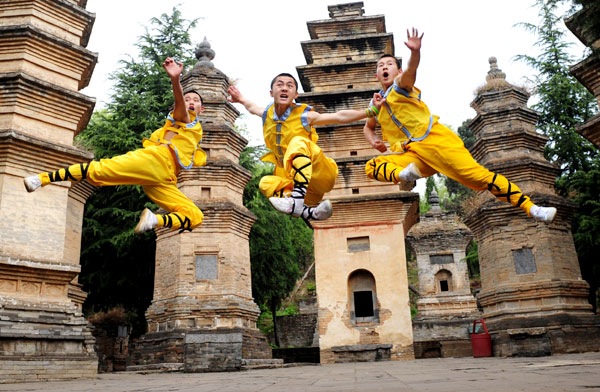


As the birthplace of Chinese martial arts and Zen Buddhism, Shaolin Temple boasts a wealth of cultural relics which makes it popular among tourists and Buddhists alike. Nestled on Mount Songshan, Shaolin Temple is believed to be at the center of the world, and therefore a repository of energy, or qi.
Take a reflective walk through the Pagoda Forest, a cemetery containing the ashes of monks stored in more than 200 pagodas and steles donated by foreign martial arts schools.
The hills west of the temple are also worth exploring, where the 750-meter-high Wuru Peak is marked by a three-story-tall, white-colored statue of Damo, the patriarch who first taught Shaolin monks martial arts and positioned the temple as the birthplace of Zen Buddhism in China.
Close to the top of Wuru lies the cave where Damo sat meditating long enough to apparently leave a shadow on the wall?- that slab of cave is now housed in Shaolin Temple itself.
If you go: You can get to Zhengzhou either by plane or train. Then take a bus from Zhengzhou Bus Station, which is immediately opposite the train station, to Dengfeng county. The bus ride takes about an hour, at the end of which is a 20-minute-ride by minibus or a taxi for the final leg of the journey to Shaolin Temple.
Wangzhi Gou, a small village south of Shaolin Temple, has about 30 hostels and hotels, and the Shaolin Tourism Hotel is one of the most comfortable options.



